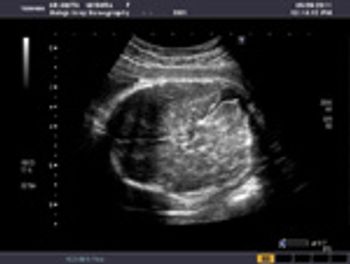
At this time, three years post-op, Roberta is satisfied with the outcome of her surgery and hopes you have found her story helpful in your search for answers.

At this time, three years post-op, Roberta is satisfied with the outcome of her surgery and hopes you have found her story helpful in your search for answers.

OBGYN.net Broadcasting presents Part VII of a series on Weight Loss Surgery. This series is unique in that we follow the patient from pre-op to one year post-op.

OBGYN.net Broadcasting present Part VI of a series on Weight Loss Surgery. This series is unique in that we follow the patient from pre-op to one year post-op.

OBGYN.net Broadcasting present Part VI of a series on Weight Loss Surgery. This series is unique in that we follow the patient from pre-op to one year post-op.

OBGYN.net Broadcasting presents Part V of a series of presentations on Weight Loss Surgery. This project is unique in that we follow the patient from pre-op to one year post-op.

OBGYN.net Broadcasting presents Part V of a series of presentations on Weight Loss Surgery. This project is unique in that we follow the patient from pre-op to one year post-op.

OBGYN.net Broadcasting presents Part IV of a series of presentations on Weight Loss Surgery. This project is unique in that we follow the patient from pre-op to one year post-op.

Gastric Lap Band Surgery For Weight Loss

June 5, 2001 - FDA today approved a new surgically implanted device to help severely obese people lose weight. The product, the Lap-Band Adjustable Gastric Banding System, made by BioEnterics Corporation of Carpinteria, Calif., is an inflatable band that is placed around the upper stomach to create a small gastric pouch. This limits food consumption and creates an earlier feeling of fullness.

OBGYN.net Broadcasting presents Part IV of a series of presentations on Weight Loss Surgery. This project is unique in that we follow the patient from pre-op to one year post-op.

OBGYN.net Broadcasting presents Part III of a series on Weight Loss Surgery. This series is unique in that we follow the patient from pre-op to one year post-op.

OBGYN.net Broadcasting presents Part III of a series on Weight Loss Surgery. This series is unique in that we follow the patient from pre-op to one year post-op.

Gastric Lap Band Surgery For Weight Loss

Today we are starting a new series on OBGYN.net about treatments for non-ob/gyn conditions that some women will choose to have in their lifetime. Roberta Speyer, owner and publisher of OBGYN.net, traveled to Frankfurt, Germany in December for a treatment for obesity that is not FDA-approved in the United States. This surgery as well as other topics will be highlighted in the months to come.

OBGYN.net is planning a new section for our web site. We are dedicating a section to both the wellness of women and to general topics of special interest to women. We are starting to develop these new topics here on the Women's Home Page in preparation for the new section, which should be online this summer.

OBGYN.net Conference CoverageFrom Radiological Society of North America (RSNA)Chicago, Illinois, November 2000



Test your ob/gyn knowledge in our DailyDx.

Uterine Fibroids are classified by their location (see figure), which effects the symptoms they may cause and how they can be treated. Fibroids that are inside the cavity of the uterus (Submucous myomas) will often cause bleeding between periods and often cause severe cramping. Fortunately, these fibroids can usually be easily removed by a method called “hysteroscopic resection,” which can be done through the cervix without the need for an incision.

When chlamydia or gonorrhea is diagnosed in female patients, obstetricians and gynecologists should also prescribe antibiotics for the male partners. This recommendation comes from The American College of Obstetricians and Gynecologists in efforts to reduce the high reinfection rates associated with these sexually transmitted infections (STIs).

Botox (onabotulinumtoxinA) injection has been approved by the FDA to treat urinary incontinence caused be overactive bladder related to conditions such as spinal cord injury and multiple sclerosis. In persons with certain neurological conditions, uninhibited bladder contractions can make storing urine difficult. This condition traditionally has been managed with medication to relax the bladder and use of a catheter to empty the bladder.

Prophylactic human papillomavirus vaccines have been shown to be effective in reducing the disease burden of cervical cancer, but the three dose regimen can be expensive and difficult to complete. With that in mind, Dr Aimée R. Kreimer, investigator in the division of cancer epidemiology and genetics at the National Cancer Institute, the National Institute of Health, and colleagues sought to determine if less than three doses of the vaccine would be effective. The results are published in the Journal of the National Cancer Institute.

Laparoscopy is a minimally invasive surgical technique in which abdominal surgery is performed through tiny "keyhole" incisions on the abdomen.

To review utilisation of elective embryo cryopreservation in the expectant management of patients at risk for developing ovarian hyperstimulation syndrome (OHSS), and report on reproductive outcome following transfer of thawed embryos.

Dysplastic Ichthyosis Uteri-like Changes of the Entire Endometrium Associated with a Squamous Cell Carcinoma of the Uterine Cervix

The first vaccine to prevent human papillomavirus (HPV) and cervical cancer has been licensed, and in future, vaccination may be routinely offered to 10–14 year old girls. HPV is a sexually transmitted virus and some parents may refuse consent for vaccination.

This case study shows a 26 week gestation with a cystic mass close to the sacrum.

Download the .PPT version of this presentation for off line viewing (1.92 MB)Return to Power Point Presentations Indexsubmit your own material for publication via email with your files attached

A recent study on sleep disturbances in menopause shows a direct connection to the use of hormone therapy. Specifically, when women stop taking hormone therapy they experienced greater periods of poor sleep, waking up during the night, difficulty falling asleep, waking up to early and not feeling rested.